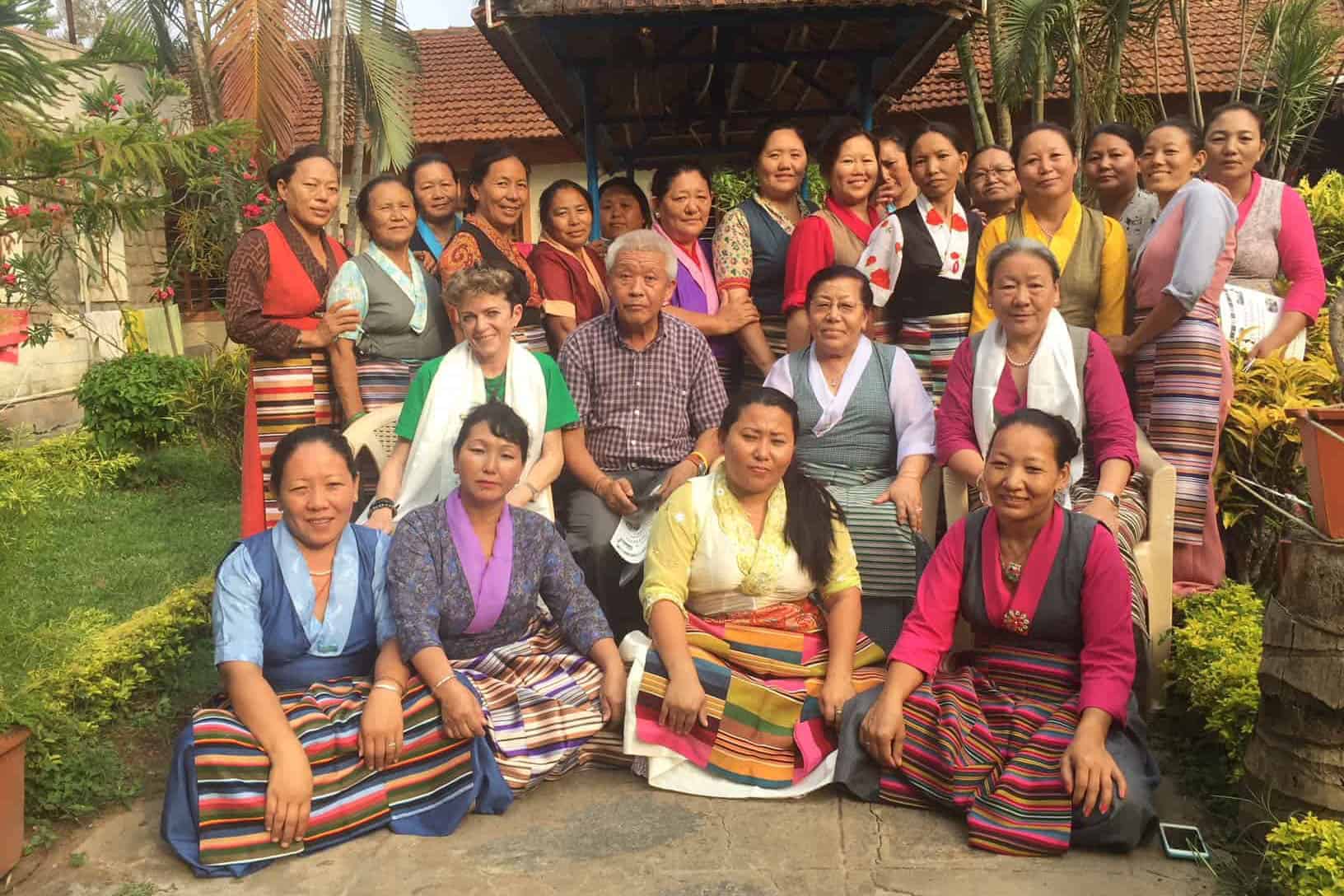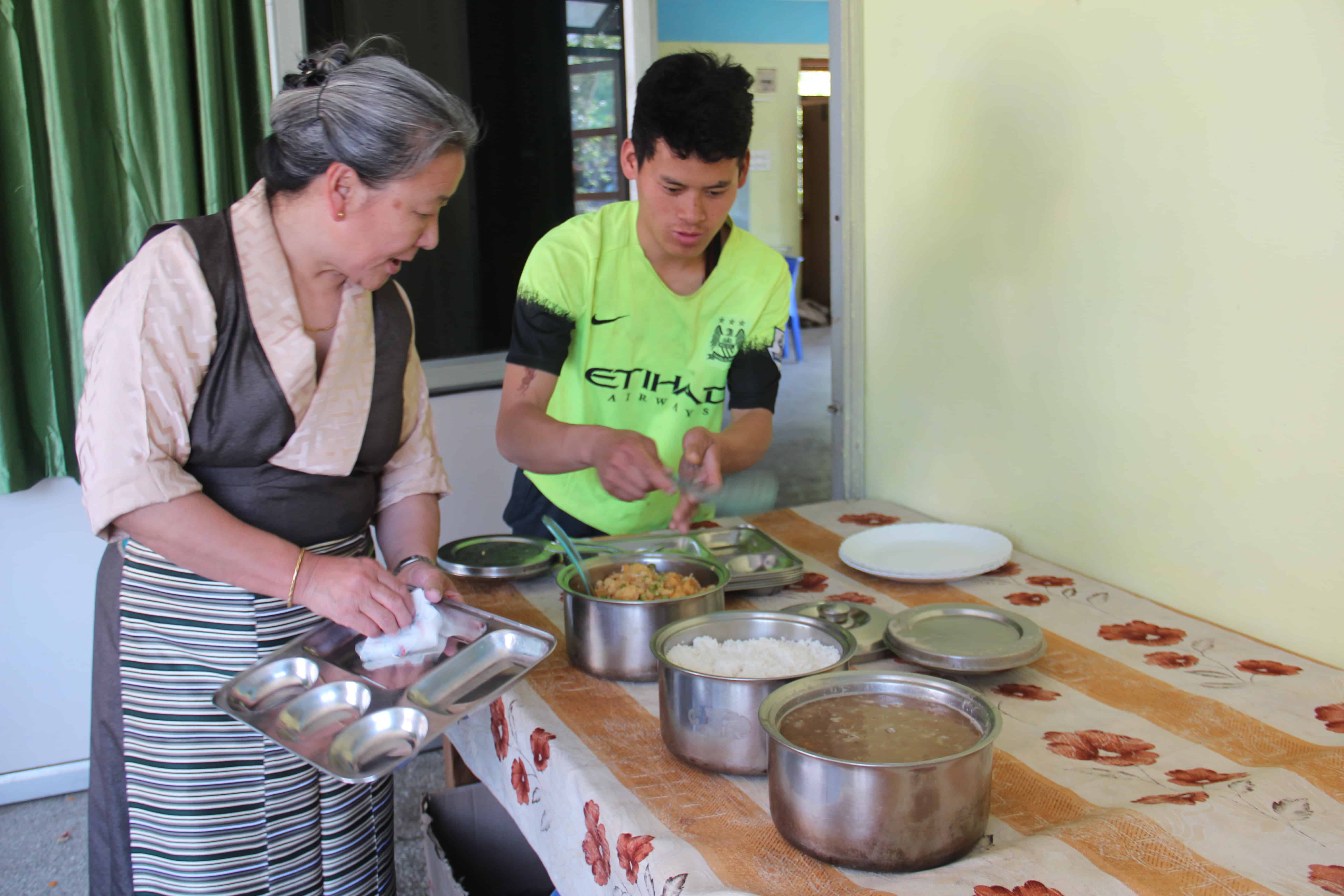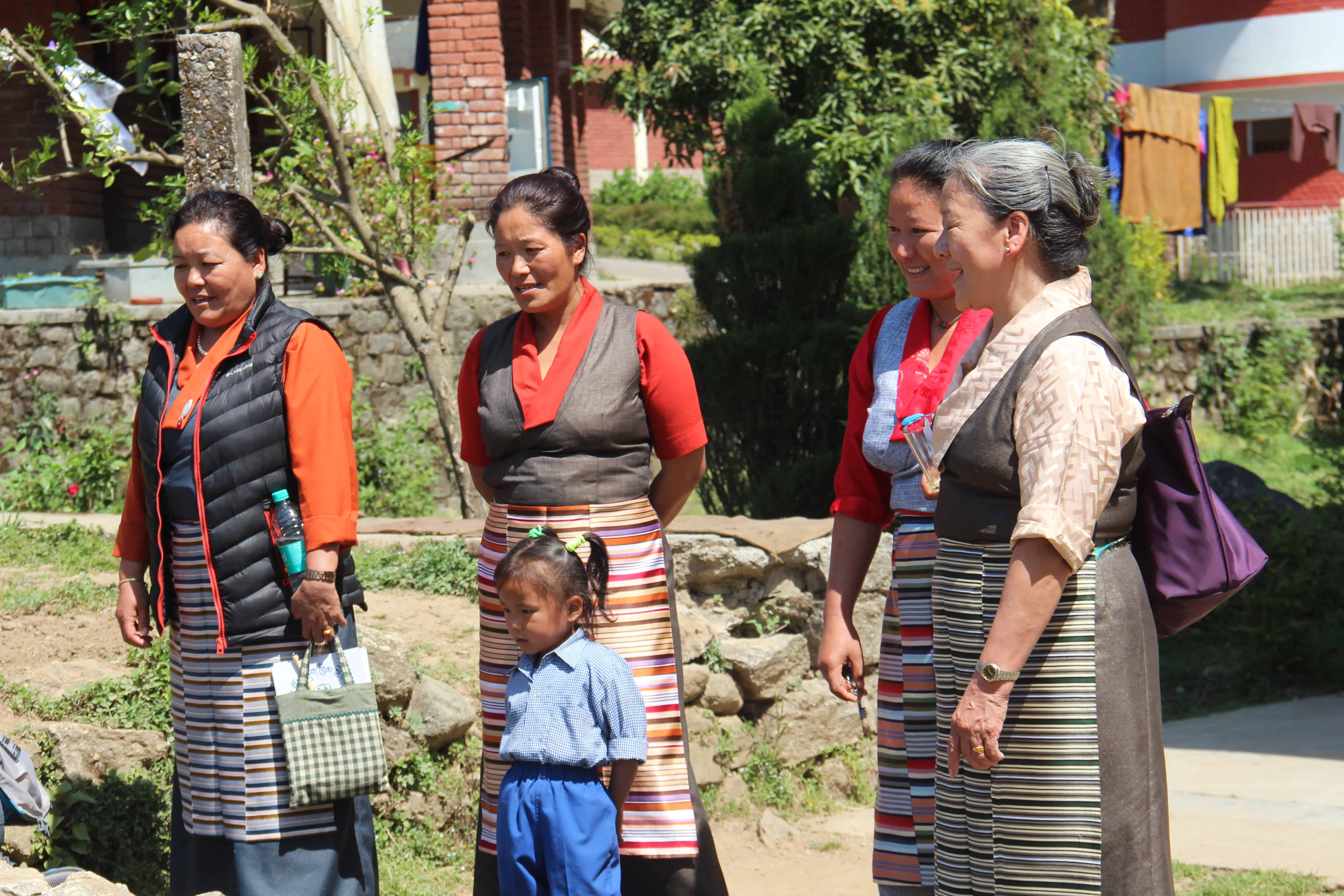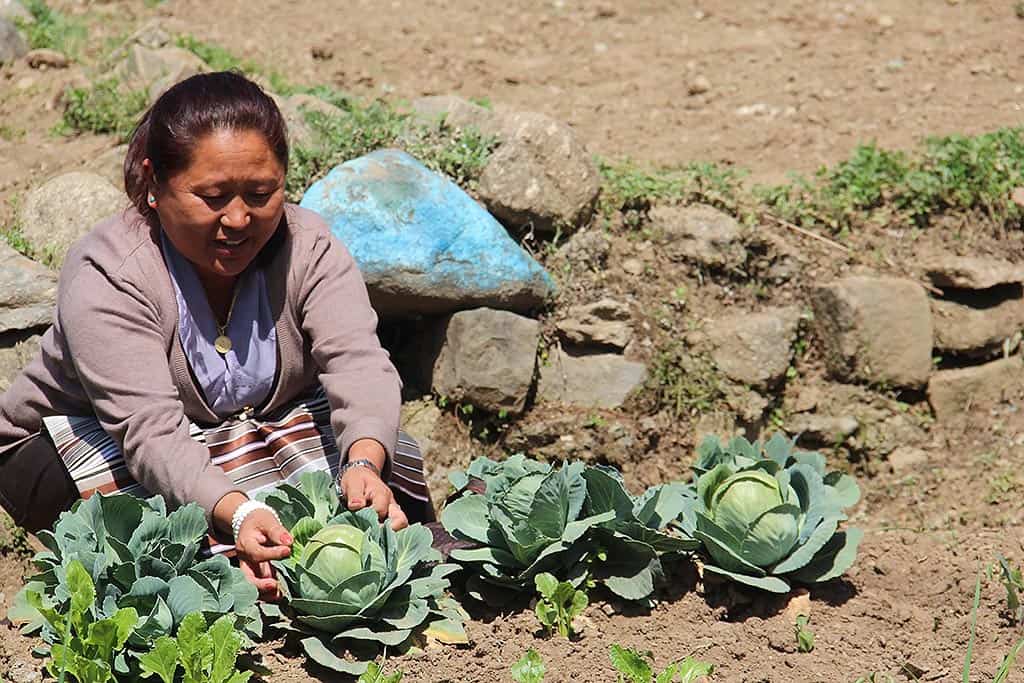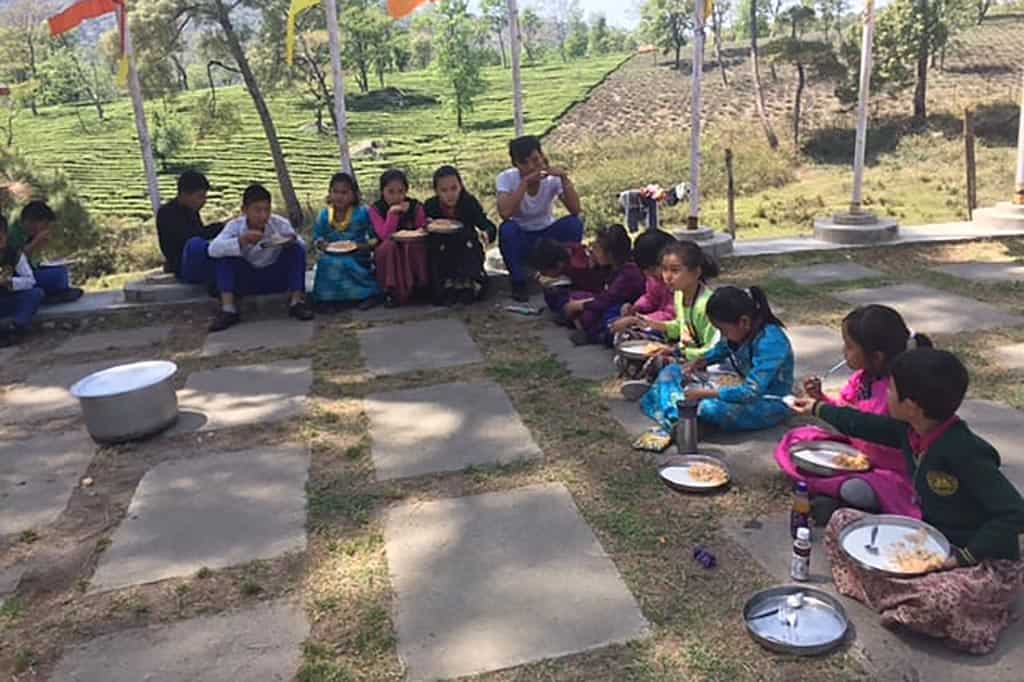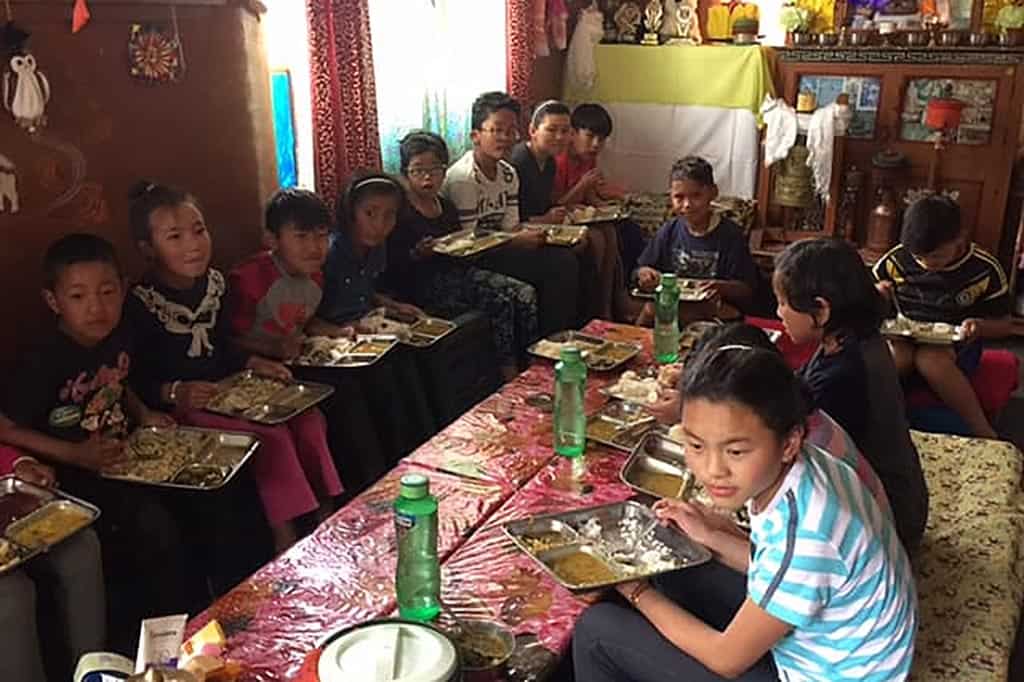Tibetan Children Villages (TCVs) in India
– Nutrition training in 8 children’s villages with approx. 8,000 children –
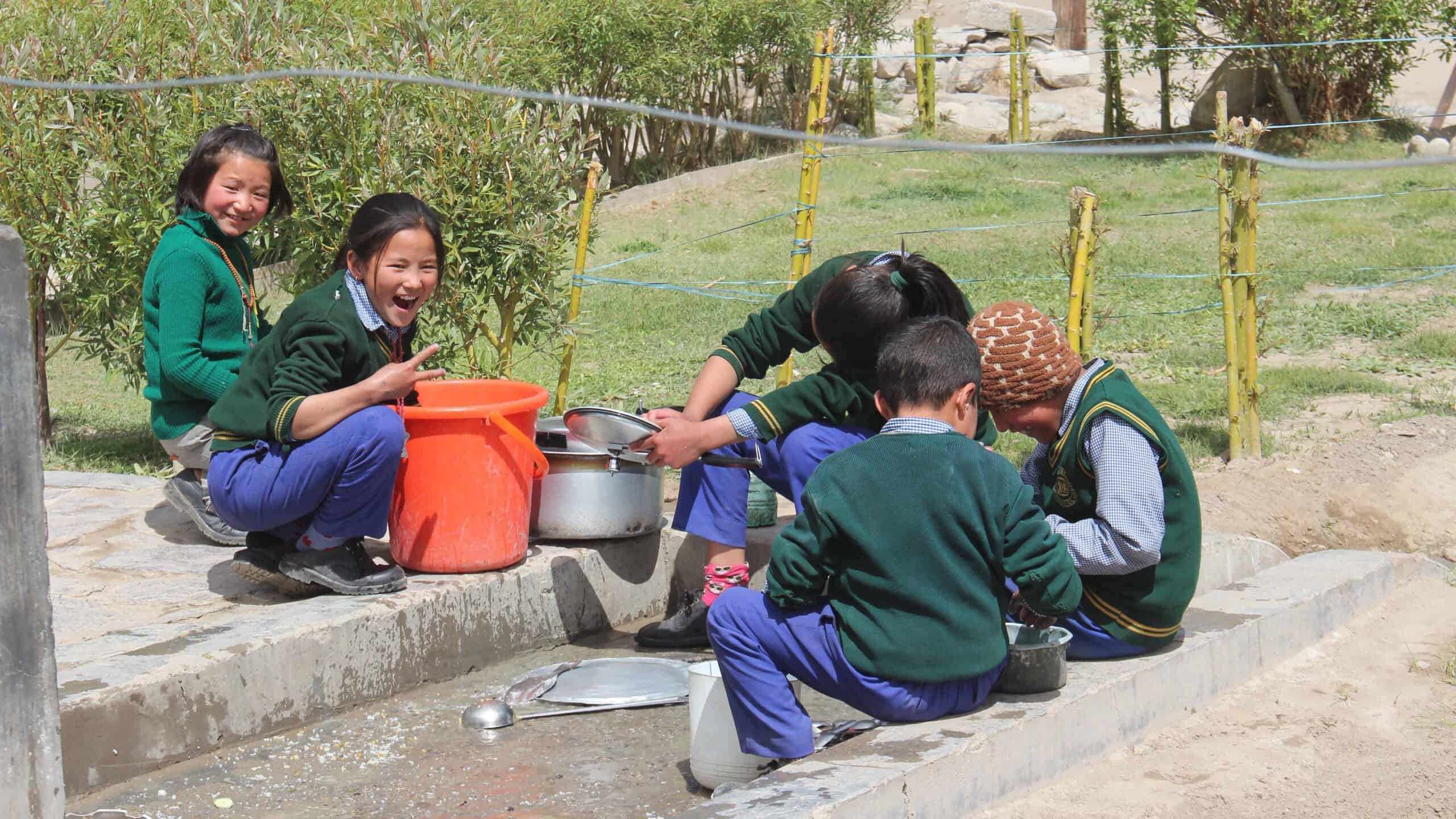
General introduction to Tibetan Children’s Villages
In 1959, SH the Dalai Lama (and with him about 150,000 Tibetans) fled to India from the Chinese occupation and its attack in Lhasa. At that time 84,000 people were murdered. A year later, in 1960, he founded the first children’s village in Dharamsala, India, where he was given a place to stay by the Indian government after his escape from Tibet. SH the Dalai Lama saw this need after more and more refugees from Tibet followed him, among whom were of course also children. But – and this was the decisive factor – many children came alone, either they had lost their parents on the way, or they had died in Lhasa during the Chinese attack. Later, their parents sent them out of Tibet so that they could grow up in the Buddhist faith and with the Tibetan language and tradition. This wave of refugees continued unabated until 2008. After the renewed Tibetan uprisings in 2008 on the sidelines of the Beijing Olympics, the borders were so tightly guarded that only a few children came and continue to come today. Meanwhile, the children in Tibetan Children’s Villages tend to be recruited from what is now the second or even third generation of Tibetans in India.
Why is this so? Well, India has given the Tibetans refuge and residence rights, as well as the Dalai Lama in the “Upper Dharamsala” (McLeod Ganj) for then conditions enough space for himself and his compatriots, but – for today’s conditions with 6,000 inhabitants and no authorization to buy new land (except SHDL) it becomes more and more cramped. Since Tibetans in India do not get passports, traveling is very difficult for them. They have to apply for a special travel permit every time and it is also extremely difficult for them to establish themselves in free professions and start their own businesses. Quite a few of today’s Tibetans in Dharamsala, but especially in the rest of India, live on the poverty line. So they are happy if they can send their children free of charge to a TCV, where they can grow up with a good school education in the Tibetan faith and with sufficient nutrition.
In addition, TCVs today increasingly take in children from remote Indian mountain villages in the Himal Pradesh region, so that some children’s villages in the north already house up to 25% poor Indian children. It is a mutual “give and take”: the Indian children also grow up in the Tibetan culture and faith, and vice versa they receive a good education and a home with enough food and supplies.
The first presidents of all TCVs were always sisters of the Dalai Lama, first his elder sister and then his younger sister Kasur Jetsun Pema-la, called only AMALA (= Tibetan word for mother) by everyone. She dedicated her whole life to the Tibetan Children’s Villages in India and was the president until a few years ago. After her abdication, Thupten Dorjee-la was appointed as president, the first time that no family member SH of the Dalai Lama presides over the TCVs.
In the “best” times, up to 15,000 children & youth lived in the 8 Tibetan Children’s Villages in India, including a Children’s Village in Ladakh, which today also belongs to India. Today there are still about 8,000 children & young people between 3-5 and 16 (depending on the school also 18) years.
The children’s villages are organized like an SOS Children’s Village or Pestalozzi Children’s Village (in Switzerland) and also have a close partnership with the SOS Children’s Villages. Each house mother looks after between 25 and 45 children, depending on local conditions. Food shopping is done centrally, but cooking is done in each household in most Children’s Villages. Since funds are very limited, there are still no refrigerators in the individual homes in 2020/21! So it is not easy for the housemothers to prepare 3 nutritious and balanced meals for the children under the given circumstances.
Background and start of the nutrition trainings
In 2016, I (PhD nutritionist and meanwhile president of the foundation board) made a nutritional analysis on the basis of different weekly plans and found that the children were fed calorically (energy-wise) sufficiently and also overall quite balanced, but – due to lack of financial means – received too little calcium (only 50% of the daily requirement!) and were strongly at the lower limit for protein. Also some B vitamins were too little or very much at the lower limit and the girls received too little iron as soon as they reach puberty. I wasn’t sure about vitamin A or beta-carotenoids, since I couldn’t get exact intakes from the vegetables. However, I suspected that the intake amounts were also at the lower limit here.
My result and conclusion was that the diet could be optimized if the children got enough milk, eggs and especially quantitatively more vegetables. But – also the preparation methods could be optimized for a better value retention of vitamins, minerals and trace elements. And in the case of protein, “intelligent” combinations of different types of protein can be found (e.g. rice and lentils, which is very typical for the vegetarian diet in India and is called dal bhat), which in total have a higher biological value than on their own (so to speak 1+1 = 3).
(more detailed information can be found on the additional page…).
Thus, already in 2016 (i.e. 1 year BEFORE the foundation was established) we decided with the president of all 8 children’s villages, Thupten Dorjee-la, 2 thrusts to improve the situation:
1) Pilot project “Cow’s Milk” in the Children’s Village TCV Chauntra.
More details can be found under projects at “Snowland Farm TCV Chauntra”.
2) In parallel, we wanted to train (first) the housemothers in nutrition, so that they would be better able to guarantee a balanced but also nutritious diet in the kitchen for the children entrusted to their care.
As a PhD nutritionist, I agreed to initially visit all 8 Children’s Villages for one week each within 2 years starting in 2017 and organize detailed nutrition training with the house mothers as a project week during this time.
Meanwhile (2021) I have “completed” these 2 years (2017 and 2018). For this purpose, I have compiled a companion book with all the picture templates, which has now already gone into its 4th edition. Since 2019, we have held so-called “refresher courses” of 2-3 days for all housemothers.
In addition, we have already started in 2018 to offer one training week in nutrition per year in the ITI (Indian Technology Institute) Selakui, a Tibetan apprenticeship training institute certified by India. There, the following apprentice trainings are mainly included: cooks, service (F&B manager), bakers and pastry chefs. In each case there are between 70 to 100 young people between 18 and 25 years.
Furthermore, in 2019 we started to offer these week block courses also with the older students of 10th – 12th grade (depending on the TCV situation). 2020 would have been the first time these trainings were offered in all 8 TCVs. But – unfortunately Corona threw a wrench in our plans and all courses had to be cancelled in both 2020 and 2021 (see “Corona times” in TCVs below.
Going forward, the plan is still to run primarily the ITI courses and the student courses. The offer has met with great interest from both groups of young people.
More background information and details can be found at:
Additional information about the nutrition trainings
Sponsoring the training courses
Already since August 2017, the travel costs and the printing of the training materials are kindly covered by the “International Campaign for Tibet, Germany”, which thus makes an important contribution to the healthy nutrition of the TCV children.
We also used the free space in the “Corona Year 2020” to create a “Tibetan Food Pyramid”, which did not exist before. Here, too, we were supported by ICT. Without this continuous help, it would not be possible to maintain the whole action “nutrition training” in the long run
www.savetibet.de
In the beginning, the training book was still black and white, but thanks to ICT support we were then able to print it in color, which greatly contributes to better understanding!
The TCVs in the Corona years 2020 and 2021.
The year 2020 was supposed to be a jubilee year for the 8 large Tibetan Children’s Villages in India (there are also several smaller institutions there) in two respects: The 60th year of foundation was to be celebrated, although it would actually have been more of a mourning ceremony than a celebration of happiness.
After all, the Children’s Villages were founded as a result of the flight of many Tibetans from Tibet and especially Lhasa (see 1st chapter).
The second big anniversary in 2020 would have been the 80th birthday of the Dalai Lama’s youngest sister SH, Kasur Jetsun Pema-la, called by everyone only AMALA (Tibetan word for mother). She has dedicated her entire life to the Tibetan Children’s Villages in India and was the president until a few years ago.
In October 2020 a big holy festival (Ten-Shuk = Long Life Prayer Offering) should have been celebrated in her honor and at the same time for the 60th anniversary of the TCV’s in Dharamsala.
Now the celebration has been postponed by one year, to October 2021, but also this date is not sure until today (May 2021), because there is a big second wave of infection in India, whose end cannot be predicted!
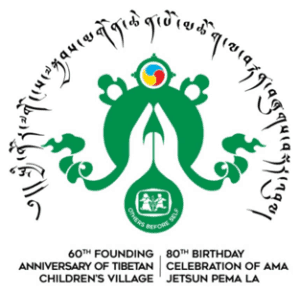
The situation of the 8 TCVs in the Corona years 2020 / 2021 (status May 2021).
Situation 2020:
The 2020 winter vacations would have ended on March 1, 2020 and the children & youth (“Kids”) would have returned to their respective TCVs from all parts of India and Nepal. With the official closure of the schools by the Indian government, it was then decided for the TCVs NOT to bring the Kids back. This was understandable, but not so good for the kids as they were stuck somewhere in India and/or Nepal in mostly poor conditions.
They then tried (again under the pen-guidance of TCV Chauntra, where Snowland Farm is also located) to conduct virtual classes with the special virtual school program Google program “Lotus”, as far as the kids had a PC and especially internet access. Fortunately, this seems to have been easier in the IT country India than in some countries in Europe, for example Germany…
The official letter from the president on April 21, 2020 informed that “only” about 900 kids were left in the 8 children’s villages (too far away to send them home or no relatives available). The next information in May stated that according to CTA (Tibetan government in exile in Dharamsala) all TCVs would remain closed until at least the end of June.
Then, already at that time, it was also informed that the two double celebrations (see above) would be postponed by one year to October 2021.
Well, as we know today, this continued for the rest of the year. On July 27, the President again informed that ALL children, housemothers and staff were safe and healthy. Already then they started to set up a big quarantine station on each campus in case the kids might come back.
In September, official information was again given with the good news that the relatives of the TCV children were receiving a monthly allowance to help them meet the living expenses of the children. Furthermore, it was informed that the especially important students of the 10th – 12th grade received a special intensive support through internet learning. The exams had been postponed by the Indian government until spring 2021, so that there was enough time to prepare the older students well.
A sad announcement was that in the old people’s home in Choglamsar (Ladakh), of the 67 elderly people between 65 and 90, a total of 6 had died of Corona.
The last official information reached us on October 19, 2020: it had been decided to bring back the older students of 10th-12th grade so that they could prepare for their exams in March 2021. After arriving at the respective campuses, the students had to go into a 2-week quarantine in the special quarantine house on campus and could then return to their respective hostels (With the 10th grade, kids usually leave their “houses” community and move to so-called hostels, where they can learn better in the community of their peers and enjoy more peace and private sphere in 2-6 bedded rooms than before.
The schools in India were officially closed in October and the older kids could not attend the “physical” classes even though they were on campus. However, the teachers tried very hard to continue to give virtual Internet classes with the help of the Google Loter program, but also through personal visits to the hostels, where they were able to give direct 1:1 lessons.
The year 2021 begins
On February 26, the president of all TCVs informs that it was decided to “bring back all the kids”: They should come back in March in 2 “spurts”, then go to the quarantine house for 2 weeks each and afterwards return to their own houses to the house mother and the “siblings”. And – the whole thing could actually be realized BEFORE the second big Corona wave in India, so that ALL kids were back in their respective TCVs when the next lockdown in India was called.
May 2021
The good and wonderful situation today is that ALL children are securely housed in their TCVs, closed off from the outside world. ALL TCVs are surrounded by a high wall and have only ONE entrance. This can be easily controlled and only vaccinated or PCR test negative people have access to the campus!
For the return needed ALL students:
– a declaration of consent from the parents or relatives where they had lived
– a negative PCR test
– Mobilies, tablets and laptops are desired from the 9th grade to be able to follow the virtual lessons
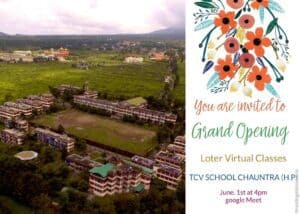
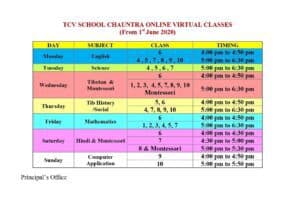
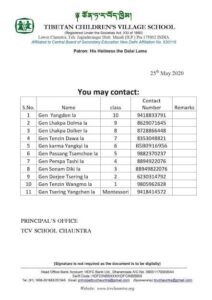
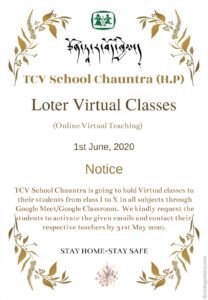
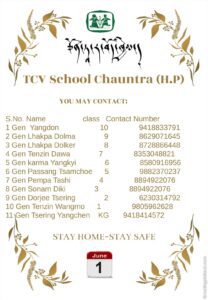

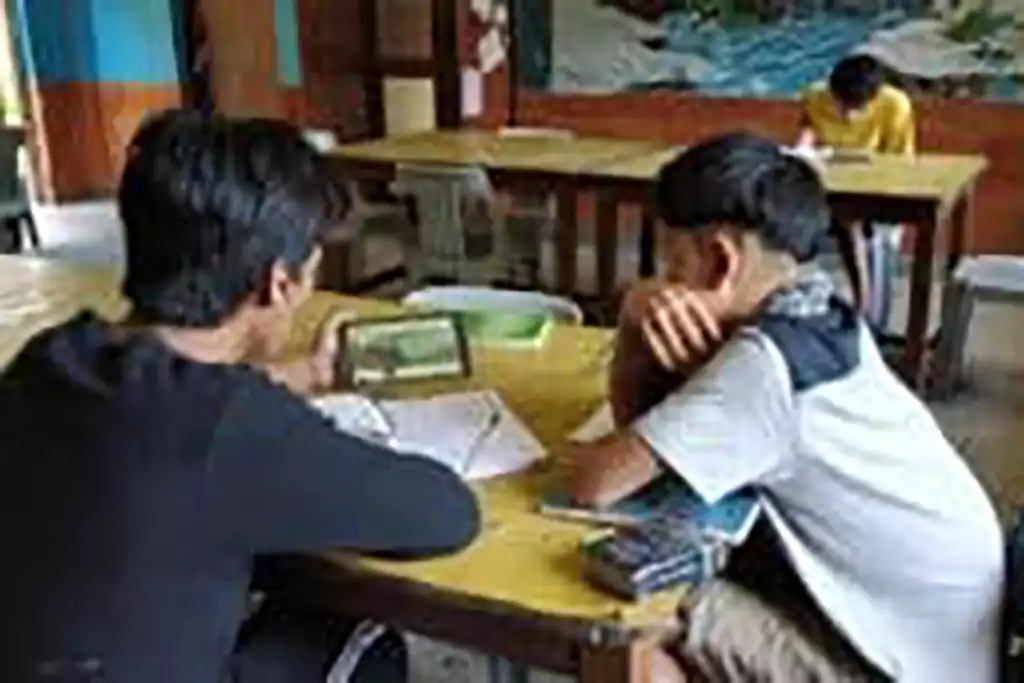
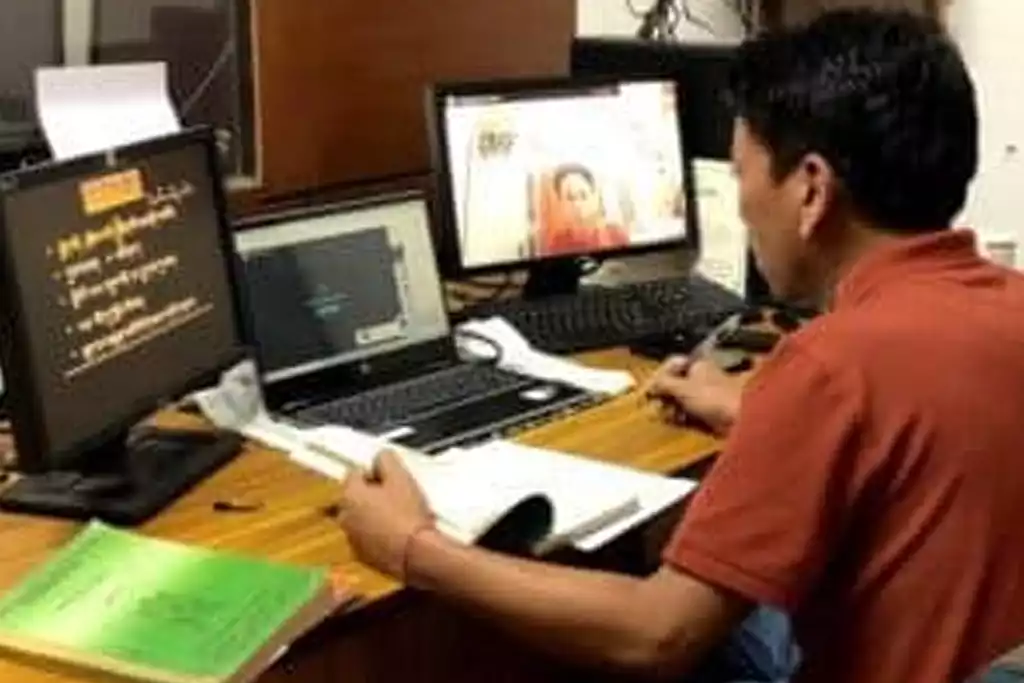
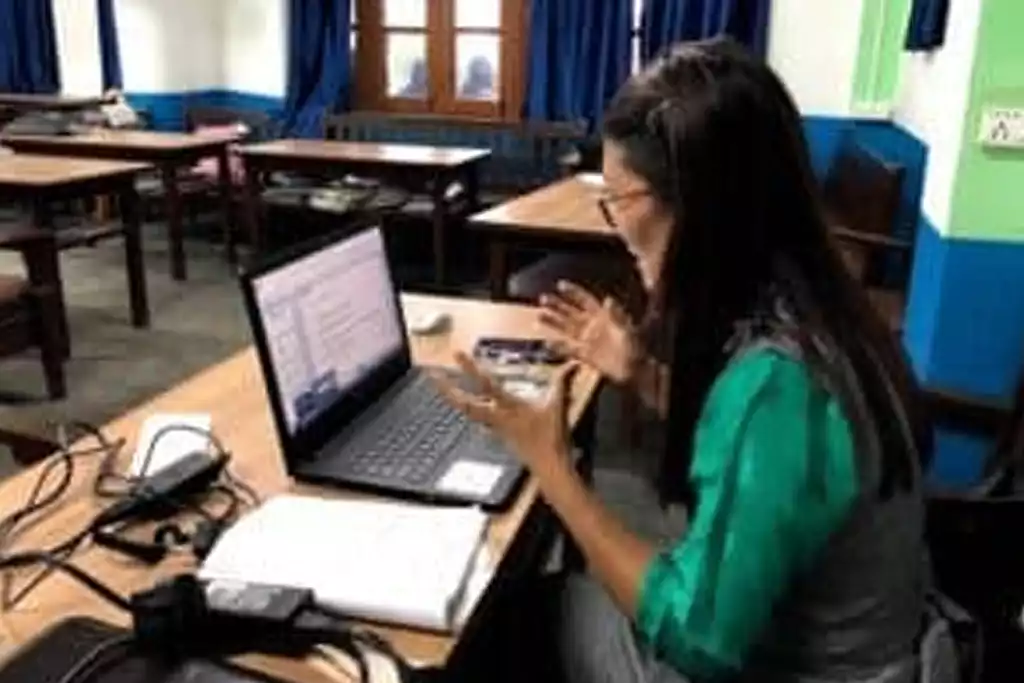
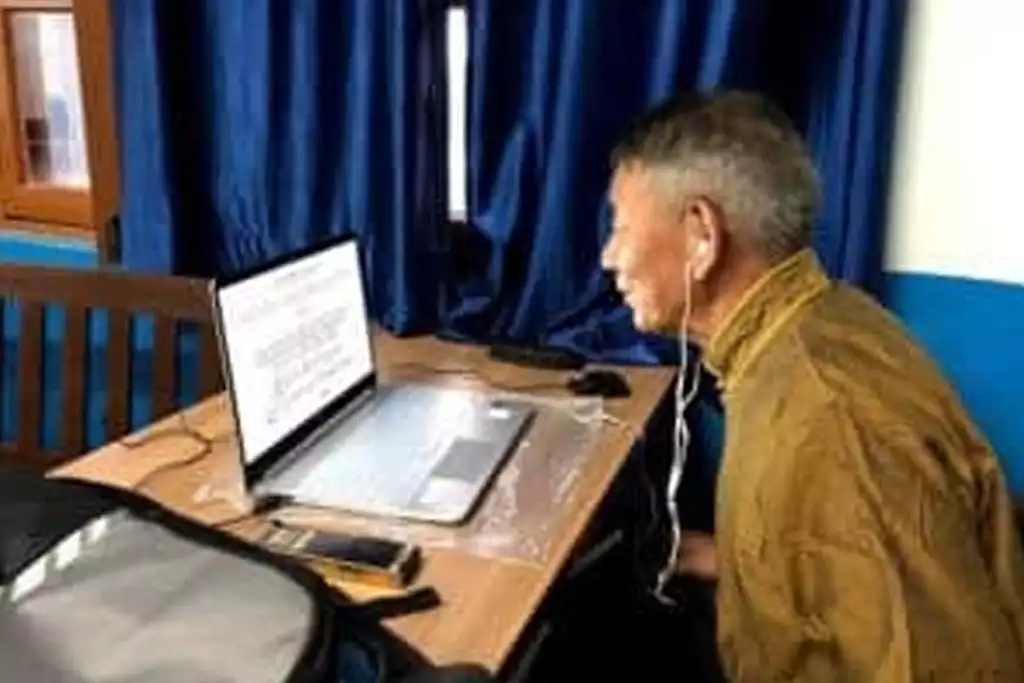
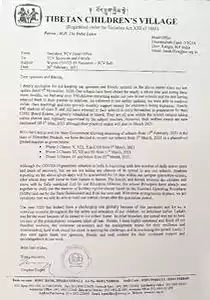
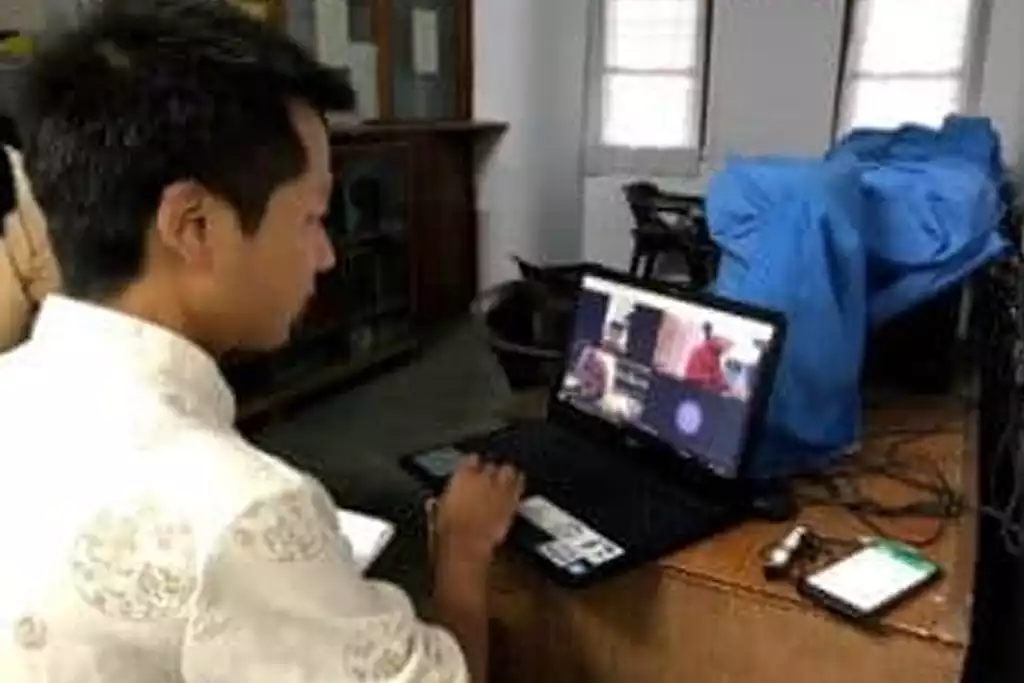
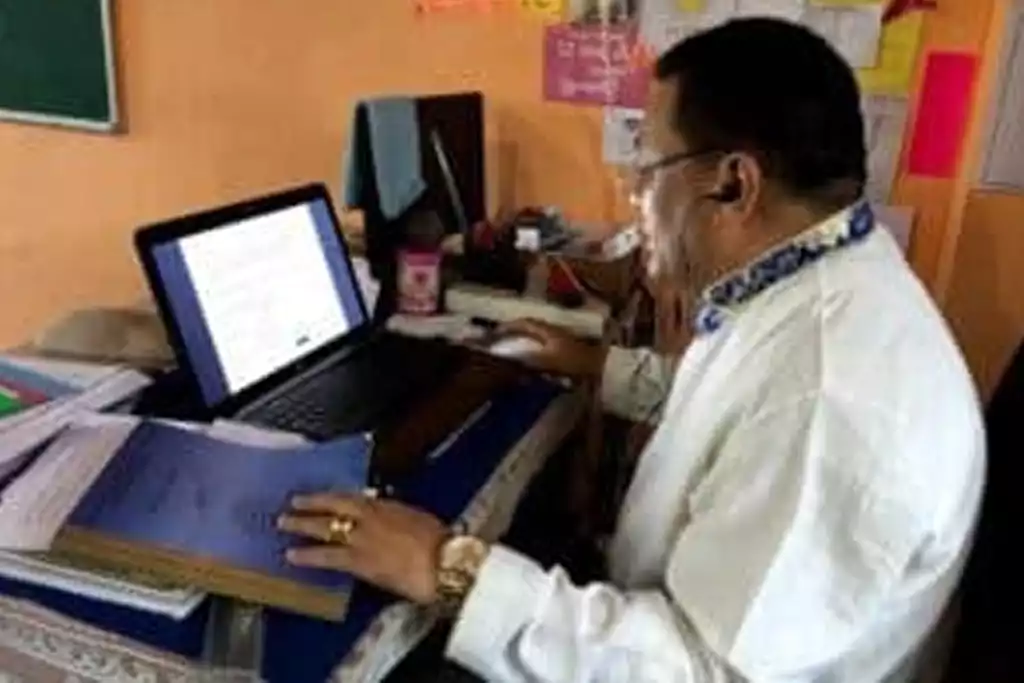
A few TCV impressions
House mothers in TCV Bylakuppe
Mrs Sharling (Director of the Mothers’ Training Center).
Homemakers in vegetable garden
Most stay-at-home moms have an organic vegetable garden to add a little extra to the diet
When the weather is nice, lunch is sometimes moved outside! Picnic time at TCV Chauntra!
Normally we eat together in the house, like here in TCV Suja

